Silver Route
Silver Route ... On the road in the Erzgebirge
Silver was mined as early as the 12th century in the region between the towns of Zwickau and Dresden and the Czech border area. This not only spawned the name of these mountains, the Erzgebirge [Ore Mountains], it defined their character in other ways, too.The peaceful, idyllic natural beauty of the mountains is a delicate contrast to the industrial products generated by the mining industry. As silver mining declined and the significance of cobalt, nickel and uranium was yet to be recognised, locals were forced to find other means of support and in the quiet mountain valleys today, those traditional crafts still survive in the form of the popular smoking figurines, wooden toys and lace-making.
The Silver Route is a journey back in time: follow the trail from the mines to the furnaces and the mints, all the way to Dresden and the cavernous royal vaults of the Wettin rulers. If you’re a fan of auto history, you'll be pleased to hear the route passes through the epicentre of GDR car production: Zwickau was where the iconic Trabant rolled off the line while the cult MZ motorbikes were manufactured in Zschopau.
It goes without saying, but any wine stops detailed on this page are for the benefit of hire car passengers ... designated drivers must confine themselves to drinking in the scenery. Book a hire car now and explore Germany
Zwickau and Oelsnitz/Erzgebirge
As the birthplace of the car industry in Saxony, Zwickau easily qualifies as the perfect place to start any road trip along the Silver Route. Zwickau wrote several chapters of German car history as the home of iconic marques, such as Horch, Audi, Auto Union and today VW, and was a major coal mining centre for about 800 years.The city also has strong ties to the silver mining industry in the Erzgebirge; back in the 15th century coins were minted here, until the royal mint was transferred to Schneeberg. Admire the splendid architecture around Zwickau’s market square to see the vestiges of this former wealth.
Classical music is always in the air in Zwickau, the birthplace of Robert Schumann, and with excellent concerts happening all year round you won't have to wait long until the next one comes around. With music in your ears, head towards Oelsnitz/Erzgebirge where the local mining museum will give you an exciting introduction to this ancient craft.
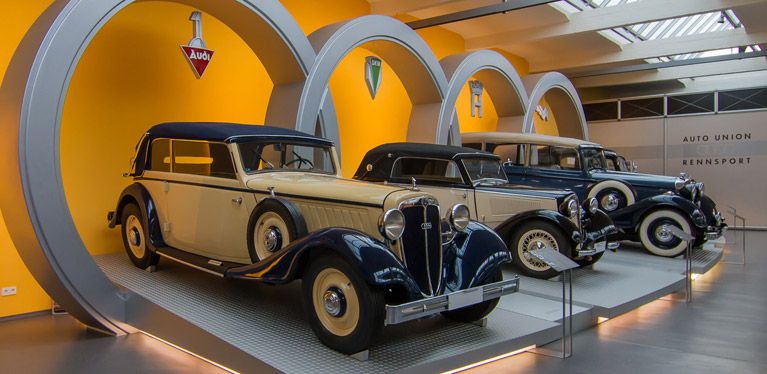
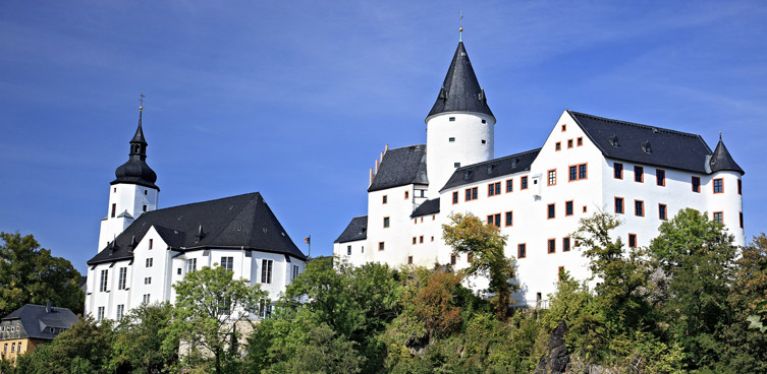
Mining in Schneeberg, Aue, Schwarzenberg
Today, the source of wealth in the former mining towns of Schneeberg and Schwarzenberg comes in liquid form in the therapeutic properties of the local hot springs. Bad Schlema is one of the spa towns that attracts visitors to bathe in the waters which contain radon, boost the immune system and relieve pain. Make the most of it and pamper yourself for a few hours with a relaxing pit stop.The Erzgebirge region is pushing to get UNESCO status as a cultural and mining heritage site; there is a stamp mill in Siebenschlehen where cobalt ore was processed into the finest cobalt blue pigments and the Fundgrube Weißer Hirsch mine, both of which are now museums. Sadly, the days when Albrecht Duke of Saxony would eat his lunch off a large block of silver down the mine are gone, but when you visit you will receive some nice titbits (of information!) from the members of the Saxon mining association.
The traditions of woodcarving and lace-making, long practised in the mining community, still thrive in this baroque town and neighbouring areas. The local mining and folk art museum explains the history and is full of fine examples from around the region. Schwarzenberg has an idyllic feel as your gaze takes in the historic old town and drifts off towards the nearby forests, meadows and hilltops. The well-developed network of hiking paths will help you reconnect with nature.
Our travel tip: from Schwarzenberg via the Fichtelberg, into the Czech Republic and on to Wolkenstein
Start this beautiful scenic trip at the medieval Schwarzenberg Schloss. Climb the tower and plot your course which starts out winding its way along the banks of the river Schwarzwasser.Passing Breitenbrunn, follow the river Pöhlwasser to Oberwiesenthal. From this popular winter sport centre you can conquer the Fichtelberg, which is 1,215 metres high and the highest mountain in Saxony, a whopping 747 metres above your starting point in Schwarzenberg. The view from the top is truly stellar, a panorama of the Erzgebirge-Vogtland nature reserve, a gently undulating expanse of rich, verdant green landscape unfolding before your eyes.
Further south it’s a fun drive as the road falls steeply, winding down into picturesque Ostrov on the Czech side. Historical evidence of mining is everywhere here, with facilities, mineshafts and snapshots of the process from mining the ore to minting the coins.
Ostrov itself is a gem; the historic old town, monastery and castle and gardens creating a collage of harmony and beauty described by some as the 8th Wonder of the World. On your return trip, exciting attractions await you in Annaberg-Buchholz: the Dorothea mineshaft in the Himmlisch Heer mine, the Dreammaker Experience Museum and the silver mine.
Continuing through the idyllic Zschopau valley, you rejoin the main section of the Silver Route and reach Schloss Wolkenstein with its amazing amethyst exhibition.
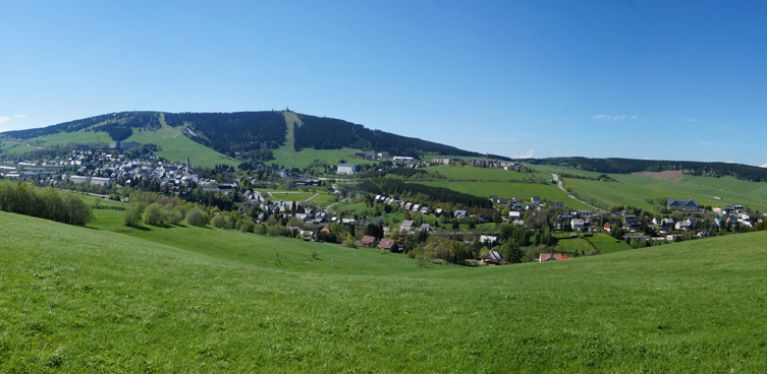
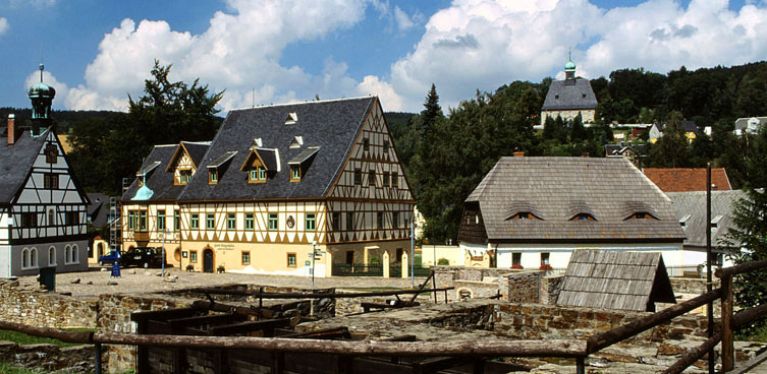
Circular route through Marienberg, Saydaer Höhe, Großhartmannsdorf, Lengefeld
Marienberg is a renaissance town and is laid out in a rectangular grid pattern set out in 1521. The Molchner Stolln visitor mine is one of the oldest and most beautiful in all of Saxony. Continuing east, the road takes you to Olbernhau by the Schwartenberg mountain, with a height of 789 metres it is one of the highest in the eastern Erzgebirge.At the foot of the mountain lies the toy village of Seiffen. The local toy museum is a huge attraction, set on an area of 7 hectares with 14 historic buildings demonstrating a unique technique for manufacturing wooden toys known as “Reifendrehen”.
Continuing north, you soon reach the local hill known as the Saydaer Höhe. The idyllic landscape is dotted with old half-timbered buildings and neat, courtyard-style farms, then you arrive in rural Großhartmannsdorf and it’s time for a stroll and a visit to admire the carefully restored local manor house. A series of dams and reservoirs are features of the final leg of this circular route.
Leaving Großhartmannsdorf, continue back on the B101 along the Saidenbach reservoir to Lengefeld. The local lime works is one of the most outstanding technical monuments to the the old binding agent industry in Europe. You can almost feel the 500 years of history in the walls of the buildings. The limestone quarries are a flora and fauna nature reserve and in the summer months they are a riot of colours bursting from the wild orchids that grow there.
From Freiberg to Tharandt
What started the great “Berggeschrey”, as the Saxon version of the American gold rush was known, was the discovery of silver ore in the Freiberg area around 800 years ago. It should come as no surprise that the Reiche Zeche visitor mine, which lies below the listed buildings of the historic town centre and has 1,000 lodes covering an area of 30 sq. kilometres, is one of the biggest on the Silver Route.It is a university town these days, with an authentic, beautifully-preserved medieval town and two impressive market squares, aptly named the upper and lower markets. Don’t miss Freiberg’s memorable St. Marien cathedral and the soul-stirring sounds of its Silbermann organs.
About half way to Dresden you will pass through the Tharandt Forest, make a pit stop at the authentic Grillenberg hunting lodge and explore the forest from there. The people of Dresden have been ardent admirers of the forest and its natural beauty for many generations.
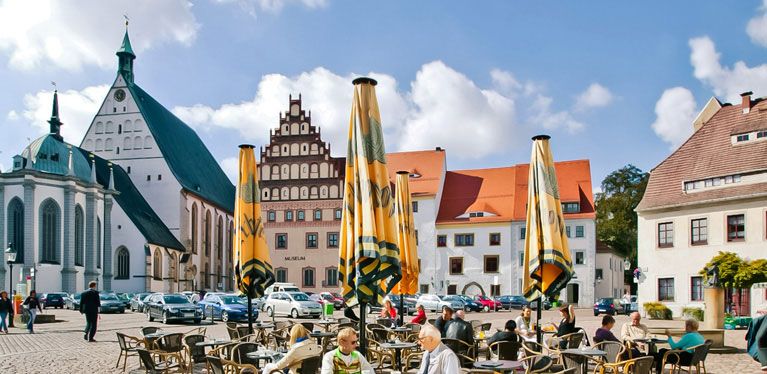
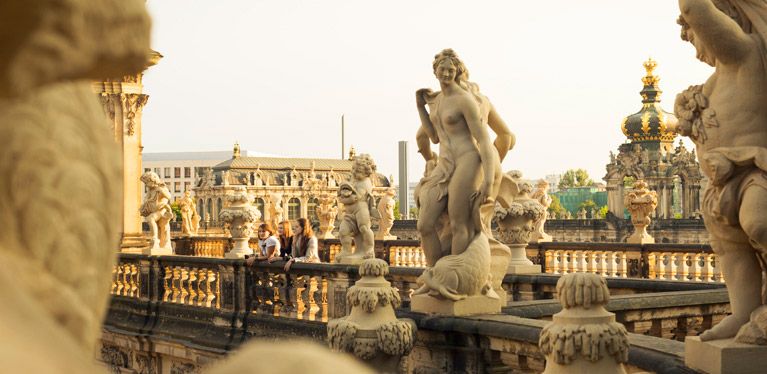
Dresden, the state capital
The iconic city of Dresden on the river Elbe and capital of Saxony is the perfect place to celebrate the grand finale of your Silver Route trip. The profits from mining the precious metals hidden in the Erzgebirge flowed into the deep vaults of the former royal seat, and provided the funds to create an urban metropolis bursting with creativity, culture and the arts.Under Augustus the Strong, the city experienced a building boom during the 18th century which helped shape Dresden’s reputation as one of Germany’s most beautiful baroque cities. The iconic buildings in the historic city centre include the Frauenkirche, Zwinger, Japanisches Palais, Residenzschloss, Semperoper, the Albertinum and many more. Together they form a sumptuous baroque collage with a stunning array of artistic, cultural and architectural treasures hidden and waiting to be discovered within their walls.
Petrol heads will love the transport museum in the Johanneum and the GDR museum in Radebeul as well as Volkswagen’s transparent Gläserne Manufaktur assembly line at the edge of the Großer Garten park.